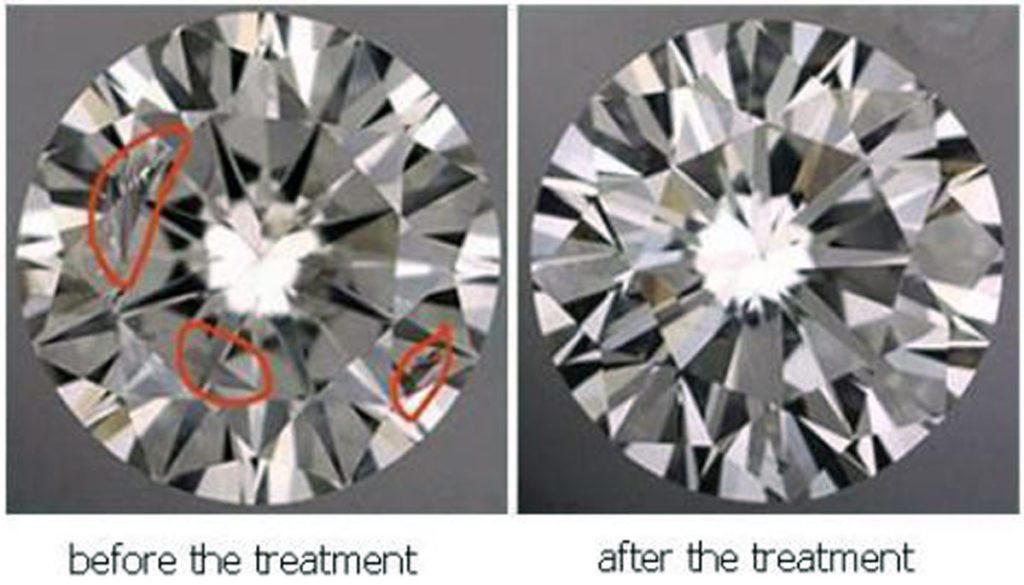What Are Diamond Black Spots?
Diamonds are entirely made up of carbon, and the black spots in them are just dots of carbon that hasn’t crystallized. They are natural flaws that occurred during the formation of the diamond and are part of its structure.

Black spots in diamonds are dots of carbon that hasn’t crystallized.
Depending on their size, black spots can affect the clarity rating of the stone.
Can Black Spots Suddenly Appear?
No. Black spots formed millions of years ago, at the time the diamond crystallized.
There is no way a black spot can suddenly appear inside the stone. However, they can become more or less visible depending on the light and how clean your diamond is.
Are Black Spots Problematic?
Not really. Unlike other imperfections that can weaken the diamond, black spots are harmless.
They are a natural part of the stone, made up of the same material but with a different color.
The biggest problem with black spots is that they can detract from the visual appeal of the diamond.
Can Black Spots Be Removed?
You cannot get rid of black spots without disrupting the integrity of the diamond.
There are clarity-enhancing techniques that can remove them, but these procedures involve changing the structure of the stone.
One method that can be used to remove black spots is laser drilling.
This is how laser drilling works: A microscopic hole is drilled in the surface of the diamond using laser, and a channel that is thinner than a hair is burned through the stone to the black spot; then, heat or acid is used to burn or dissolve the black spot. In the end, what’s left of the inclusion is empty space.
The microscopic tunnel and the hollow at the end of it can be filled with a glass-like substance – a process called fracture filling.
The problem with laser drilling is that it can weaken the structure of the diamond if too many black spots are removed – the more tunnels and holes inside the diamond, the more likely that it will crack if hit harder.
It is true that the empty space can be filled with another material, but fracture filling also has risks: the new substance has properties that are different from those of the diamond and can change the stone’s color and brilliance; in addition, if you have your jewelry repaired, the heat that is often used in the process can destroy the filling.
Generally, it is questionable whether it’s worth it to have your diamond laser drilled or fracture filled. Most black spots are usually tiny and not easily seen.
If the black spots are big enough to annoy you, a more permanent solution would be to exchange your stone for a better one by paying additional money.
Our Recommendation
Because you might end up with a stone that has visible flaws, we always advise diamond buyers to only purchase stones that they have seen prior to buying them. This is why we recommend retailers such as James Allen, which allows you to see each diamond with a 360-degree diamond viewing technology online.
If you can’t see the diamond you’re buying, the best option you have to make sure you don’t end up with visible inclusions in your stone is to only look at diamonds of the highest clarity grades (e.g., IF or VVS1). Needless to say, that will cost you more money than if you could search through lower-clarity diamonds to find a stone that doesn’t have visible flaws.
How to Make Black Spots Less Visible?
If you don’t want to trade your diamond in, the best way to make black spots less noticeable is to clean your stone.
If your diamond is dirty, its brilliance and sparkle will be diminished, and the black spots will stand out.
After you clean the dust and other particles accumulated on your stone’s surface, more light will be able to enter the diamond, and the intensified play of light will make any flaws less visible.
Source: http://www.jewelrynotes.com/what-are-diamond-black-spots-and-can-they-be-removed/

